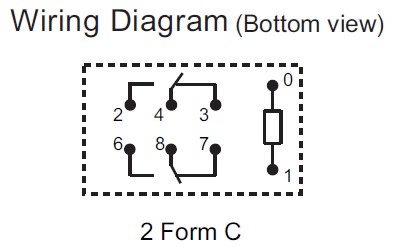Transistor as a Switch Summary. When using the bipolar transistor as a switch they must be either “fully-OFF” or “fully-ON”. As one of the significant semiconductor devices, transistor has found use in enormous electronic applications such as embedded systems, digital circuits and control systems.
In both digital and analog domains transistors are extensively used for different application usage like amplification, logic operations, switching and so on. This article mainly concentrates and gives a brief explanation of transistor application as a switch. Almost in many of the applications these transistors are used for two basic functions such as switching and amplification.
The name bipolar indicates that two types of charge carriers are involved in the working of a BJT. These two charge carriers are holes and electrons where holes are positive charge carriers and electrons are negative charge carriers. The transistor has three regions, namely base, emitter and collector. Se hela listan på electronicshub. Depends on the biasing conditions like forward or reverse, transistors have three major modes of operation namely cutoff, active and saturation regions.
A transistor is used for switching operation for opening or closing of a circuit. This type solid state switching offers significant reliability and lower cost as compared with conventional relays. Both NPN and PNP transistors can be used as switches.
Some of the applications use a power transistor as switching device, at that time it may necessary to use another signal level transistor to drive the high power transistor. As discussed earlier that the transistor can be used as a switch. The schematic below shows how a transistor is used to switch the Light Emitting Diode (LED). The input applied at the base causes to drive the transistor into saturation region, which further the circuit becomes short circuit.
So the relay coil gets energized and relay. As mentioned in above, the DC motor is also an inductive load so we have to place a freewheeling diode across it to protect the circuit. By switching the transistor in cutoff and saturation regions, we can turn ON and OFF the motor repeatedly.
Basically, a transistor consists of two PN junctions, these junctions are formed by sandwiching either N-type or P-type semiconductor material between a pair of opposite type of semiconductor materials. The emitter is a heavily doped terminal and it emits the electrons into the Base region. The Base terminal is lightly doped and passes the emitter-injected electrons onto the collector.
The collector terminal is intermediately doped and collects electrons from the Base. If the circuit uses the BJT transistor as a switch , then the biasing of the transistor, either NPN or PNP is arranged to operate the transistor at the both sides of the I-V characteristics curves shown below. In the active region, transistor works as an amplifier. The two operating regions of transistor Saturation Region (fully-ON) and the Cut-off Region (fully-OFF) were used to operate a transistor switch. The circuit is designed by using a transistor as a switch , to light the bulb in a bright environment and to turn it off in the dark and a Light-Dependent Resistor (LDR) in the potential divider.
Then the transistor is switched OFF. When the environment dark LDRs resistance become high. One important component in the circuit of a heat-operated switch is the thermistor. The thermistor is a type of resistor that responds depending upon the surrounding temperature. Its resistance increases when the temperature is low and vice versa.
When heat is applied to the thermistor, its resistance drops and the base current increases followed by a greater increase in the collector current and the siren will blow. This particular circuit is suitable as a fire alarm system. The operating conditions of the transistor are zero input base current (IB=0), zero output collector current(Ic=0), and maximum collector voltage (VCE) which in a large depletion layer and no current flowing through the device.
Similarly, for PNP transistor, the emitter potential must be ve with respect to the base of the transistor. Therefore the transistor is switched to Fully-OFF. At this condition, the depletion layer becomes as small as the possible and maximum current flowing through the transistor. Have you got the clear information of how a transistor can be used as a switch in different applications? We acknowledge that the above-given information clarifies the whole switching concept with related images and examples.

Furthermore, any doubts regarding this concept or to implement any electrical projects, please give your suggestions and comments on this article you can write in the comment section below. Here is a question for you, What is the main function of a transistor? For understanding the working of a transistor as switch we use bipolar junction transistor ( BJT) and will construct its current versus voltage curve. There are regions in which transistor operates the first one is active, second one is saturation and third one is cut-off region. The action of the transistor , while using a transistor as a switch.
Consider an NPN transistor as shown in Figure. We design this digital switch by connecting P-type and N-Type semiconductor materials with each other. When we combine a P-type and N-Type semiconductor materials with each other, a junction is formed between them.
This PN junction controls the flow of current across the junction. But this junction breaks by applying a proper biasing voltage across transistor pins. These terminals are: 1. It is a three-terminal device. Base ( When using as a switch, we apply control logic this terminal) 2. Emitter When we apply a biasing voltage to the base terminal, the PN junction breaks down. After that current can flow between collector and emitter terminals.
Otherwise, forward current can not flow through the device. How to use a transistor as a switch in electronics circuits 2. Now we will learn: 1. As we see earlier, we can use two regions only. Now, we will see how a transistor works in these regions. Cut off region is also known as fully OFF mode. In this mode, it acts as an open switch.
To operate the device in cut off mode, We should connect reverse biasing voltage to both junctions. In the saturation region, the transistor remains in full-on mode. The maximum current can flow through the collector to emitter according to the rating capacity of the transistor. We provide forward biased voltage between base and emitter terminal.
It works like a short-circuit between collector and emitter. The biasing voltage is usually greater than 0. But in all these applications, the basic purpose is switching. This diagram provides an example to control high power loads such as motors, lamps, and heater. But the output of the AND gate is only volts 2. By using a transistor as a switch , we can drive 12v or even high voltage loads with a 5-volt digital logic signal 3. Basically as per the generations of the electronic circuits gets revolutionized and improved for better and comfortable living the transistors played a prominent role by replacing themselves with vacuum tubes.
This leads to an improvement in efficiency and compression in size. To turn the PNP transistor operating as a switch “ON”, the Base terminal is connected to ground or zero volts (LOW) as shown. During this condition the Collector Emitter voltage Vce will be approximately equal to zero, ie the transistor acts as a short circuit. For a silicon transistor it is equal to 0. It has three terminals named as BASE, Emitter And Collector. Many amateurs will notice that the circuit in Figure is used as the PTT in many transmitter circuits.
This Lecture is prepared for underg. This is a state (mode of operation) where no matter how much additional current is pumped into the base terminal of the transistor, the collector current will not increase any further. Using JFET as shunt and series switch , P-Channel JFET as a Switch , MOSFET as switch.


Inga kommentarer:
Skicka en kommentar
Obs! Endast bloggmedlemmar kan kommentera.